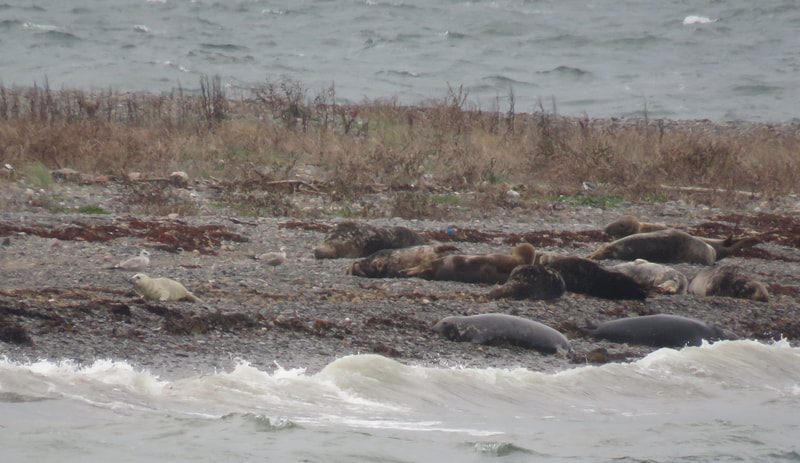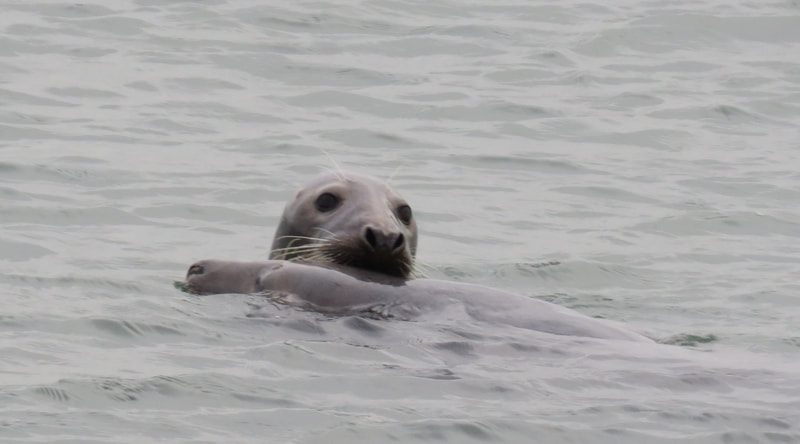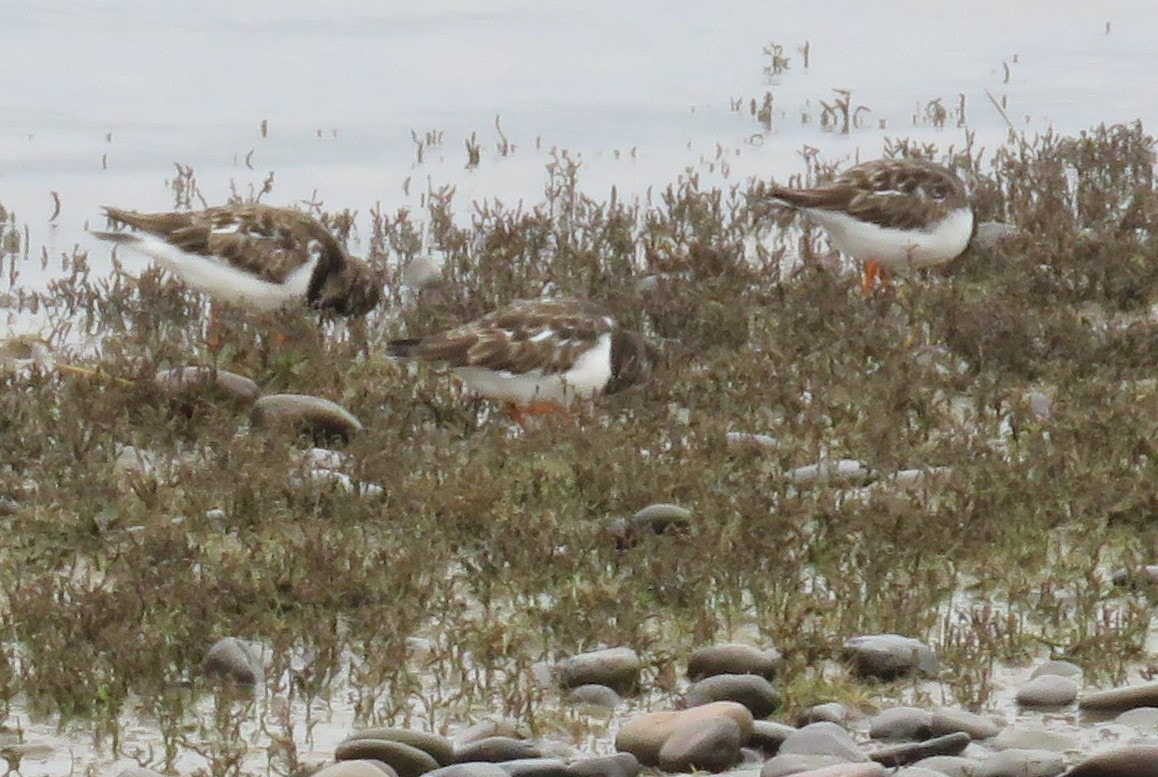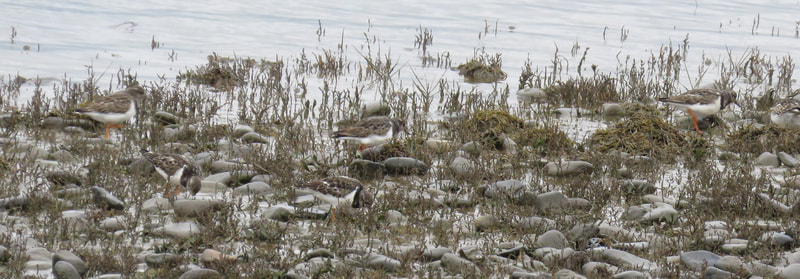 Piel Castle and the old pier almost submerged
Piel Castle and the old pier almost submerged We hear redshank, geese and the occasional curlew. There's a flock of lapwing, waders fly overhead and it's all so evocative.
Afterwards, the images of the day bring surprises. We saw a sole male eider, my camera found forty. And it caught the fast-flowing tide when we were close-focused on grey seals.
The salt marsh had vanished, flooded by the tide, no roosting ground visible. Grey seals swam close to shore in deeper water and popped up to peer at us, a mutual curiosity. Roman noses and wide- apart nostrils distinguish grey seals from common seals.
High tide creates a fresh tide-mark, a feeding ground for waders as the tide ebbs leaving seaweed and nutrients. A flock fed along the water's edge, amongst pebbles and seaweed, the birds moving along the strand- line. The day was cloudy, the light poor and the birds intent on feeding, their heads down. They're turnstone, the name indicating their habit of foraging in seaweed and shingle on the shoreline. White bellies and orange legs show bright with 'distinctive pale breast side-patches' ( Collins Bird Guide.) These show clearly against a dark bib.
There were a few straggly yellow-horned poppies on the shingle. A viola and viper's bugloss on sandy ground.





























 RSS Feed
RSS Feed